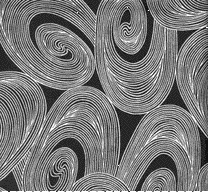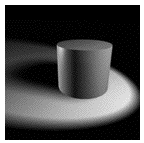Classroom management and diversity: A panel discussion reflectionby Gerry Lassche (Miyagi Gakuin Women's University) |
| Abstract |
|
A brief review of the planning process for a panel discussion on managing classroom diversity is followed by a summary and discussion of expert opinions. Each panelist highlighted different perspectives on the issue, showing how materials design, classroom interaction, assessment procedures, gender issues, social pragmatics impact upon classroom experiences. Three main themes emerged: diversity as universal, increasing choice, and increasing awareness. The paper culminates shared communications before, during and after a conference event between the author and the panelists. Keywords:classroom management, classroom dynamics, multi-level language classes, mixed-level language classes |
|
Where no counsel is, the people fall: but in the multitude of counselors there is safety. Without counsel purposes are disappointed: but in the multitude of counselors they are established. - Proverbs 11:14; Proverbs 15:22 |
I am afraid of restricting the panel discussion so severely [to one pre-determined topic such as TASK] and cutting out audience interest in many other aspects of what might be possible to discuss when you have reps from each SIG in front of you… Time Magazine a year or two ago made "YOU" the person of the year, meaning everybody and everybody's increase participation in internet communities that were changing the face of how we do research, business, or make encyclopedias. I think it is time JALT tried to make the audience and their concerns the centerpiece more, by saying ‘we have a panel of SIG people, what would you like to hear from them? We have a few [ideas] ourselves that we could [have] them address, but we would like to open it up to you also. Please send us your questions.’ Now we may get nothing. But the participation should still be invited, even at the event. We need to solicit the wisdom of crowds, especially when it is so easily done. Guessing about what your students are interested in is traditional education, surveying their interests is a wise student-centered thing to do which can teach the teacher a lot. I think organizations can do this as well. (personal communication, [ADD DATE], 2008)
[ p. 73 ]
I am seeing the whole session somewhat like a loop input session—the group will definitely be MIXED LEVELS with very diverse people. We could handle them somewhat as we might manage a very diverse class – with openness, making them into participants and getting them to learn from each other as well as from the panel, with a bit of adventure. The logic behind the above would be to NOT set us up as knowers and the audience simply as learners but to admit we are in this together and can learn from each other. Talking about the difficult group will humble us and keep us from positioning ourselves as the perfect, no problem teachers…we can ask for their help with our own concerns, worries, etc. Someone could put all the questions, concerns, and questions that we have up on the PowerPoint as we proceed. (personal communication, [ADD DATE], 2008)
| "Choosing a textbook to use with any class is bound to be a matter of simply accepting the fact that there will be inevitable student differences, and to make provisions for this. " |
 Figure 1. A symbolic representation of the learning core and optional learning orbits. |
[ p. 74 ]
[These were] name cards with the students’ names on the front and basic questions written out in English on the back for the student to refer to during class. I have observed on numerous occasions a “senpai” helping out a “kohai” by explaining what the card is and how to make it. Some students have even gone as far as making them for the new students. (personal communication, May 23, 2008)These are intra-supportive, and through development of relational bonding, differences become complementary, a pattern I visualized as the fabric weave design of Michael Miller in Figure 2 (below).
 Figure 2. A depiction of intra-supportive relational bonding as a fabric of interwoven, complementary swirls. (Image courtesy of Michael Steiner) |
[ p. 75 ]



In such cases I (as teacher) have had to take an extra role of “police” or “regulator” and had to put a stop (in diplomatic means, of course) to a student disrupting the flow of a class by speaking too much or speaking out of turn. Otherwise, I would risk allowing the disruption to continue and this would eventually lead to the other students quitting the class. [This is] something I personally experienced years ago and refuse to allow to happen again. (personal communication, May 23, 2008)
[ p. 76 ]
| ". . .group-work requires[conflict], especially if intimacy and trust is to build between members so that more effective group-work can follow downstream" |
I've heard so many people talk about a downward spiral in our educational system,’ he writes later, ‘and I think one key factor is that there is too much stroking and too little real feedback.’ Recalling how he used to put his entertainment technology students in working groups and require them to provide written feedback to each other, he remembered one socially abrasive student who was ranked in the bottom quartile of his peers' evaluations. He figured that if he was ranked in the bottom 25 percent, he must have been at the 24 percent or 25 percent level ... So he saw himself as ‘not so far from 50 percent,’ which meant his peers thought he was just fine. That's when Pausch told the student that in fact he ranked dead last, and as the student tried to deal with the shock, his professor said: ‘I used to be just like you. I was in denial. But I had a professor who cared about me by smacking the truth into my head. And here's what makes me so special: I listened. ... I'm a recovering jerk. That's what gives me the moral authority to tell you that you can be a recovering jerk, too. (personal communication, [ADD DATE], 2008)
[I asked the audience to] pick up on a point Eric Skier had made about the idea of ‘community’, [and] what ‘fair assessment’ means to the various stakeholders involved in the assessment process, including administrators, teachers and, of course, students. Administrators focus on summative assessment based on grades or, in some cases, scores on institutional tests — not unlike a government – to which teachers must report achievement. By accommodating administrative needs, many teachers may have to serve ‘two masters’; to both their institution and to their personal commitment to their students’ education. My view is that the classroom constitutes a community where both teachers and students tend to have a greater interest in on-going, formative assessment of how they are doing so far towards reaching their goals. (personal communication, May 28, 2008)
| "one way to increase student reflectivity would be to increase their involvement in evaluations at all levels, including needs analysis, feedback, making the scoring rubrics, and so forth" |
[ p. 77 ]
 Figure 6. A suggested iterative feedback loop for classroom assessment. |
As time ran out, I had only been able to hint at what could have been an important point for further discussion when he said, 'After all, if language proficiency is all that is to be assessed, can’t we all assess whether students are going to be given an A, B, or C at the very beginning of a course?'Blake Hayes on Social Dynamics in Multilevel ClassesI would have welcomed questions about how teachers might activate more of the ‘Learner Factors’ mentioned above. I hope that more attention be given to the idea that foreign language learning goes only as far as what drives students to learn it, but there’s nothing finer for a teacher’s self-esteem than to think that their method of assessment played a role in a continuing desire to study it.” (personal communication, May 28, 2008)
| "As an ever-present and seemingly unchanging “shadow” entity, [gender's] importance can fade into the background of our awareness." |

[ p. 78 ]
The president of Harvard University, Lawrence H. Summers, sparked uproar at an academic conference Friday when he said that innate differences between men and women might be one reason fewer women succeed in science and math careers. Summers also questioned how much of a role discrimination plays in the dearth of female professors in science and engineering at elite universities. (Bombardieri, 2005, par. 1)
Japan ranked 91st out of 128 countries in the World Economic Forum’s annual ranking of gender-equal countries presented on Thursday, the lowest ranking among all high income countries except for South Korea and five Middle Eastern countries… While Japan scored high in education and health areas, the gender income gap, the lack of women in legislation, management and parliament and ministerial positions brought Japan’s score down to 0.645, where 1 means total equality and 0 total inequality… The index covers over 90% of the world’s population, but does not include North Korea in its rankings. (2007, par. 1, 3, 6)
| ". . . since we cannot rate individuals, groups form the proper unit of measurement." |
Lamb says somewhere that if, of three friends (A, B, and C), A should die, then B loses not only A but “A’s part in C,” while C loses not only A but “A’s part in B.” In each of my friends there is something that only some other friend can fully bring out. By myself I am not large enough to call the whole man into activity; I want other lights than my own to show all his facets. (p. 75)
[ p. 79 ]
How can we begin to presume we know the motivations of those in our classes? Don felt that no matter what information is given on questionnaires or in interviews as to why a person is taking a course, there may be hidden learner agendas which we will never have access to, and that it is simplistic, possibly even dangerous, to assume we do. As for the context – a Hungarian class conducted overseas with a wide range of ages and abilities – it may have initially appeared to have little relevance to the audience, but Don pointed out that in Japan’s classrooms today we are finding much greater diversity. In university classes, along with the usual 19 or 20-year olds, we have mature learners, returnees and foreign students from other countries. The problems encountered en route to Budapest exist in many of our local classrooms. (Personal communication, May 18, 2008)
| "A good way to start handling complexity in the classroom would be the primary recognition of diversity as something that ever-present and increasing, and that it represents a large potential for positive growth." |
[ p. 80 ]
[ p. 81 ]